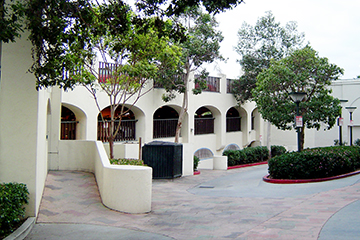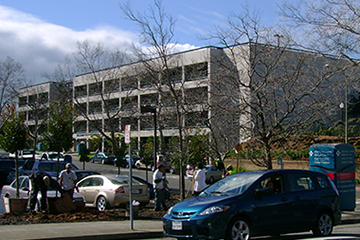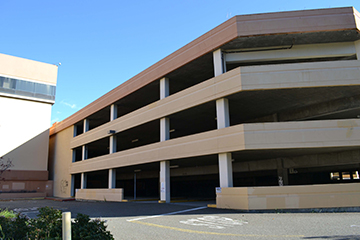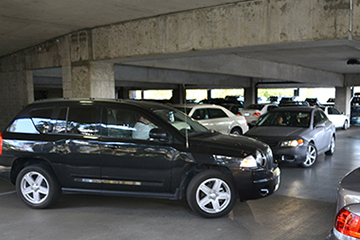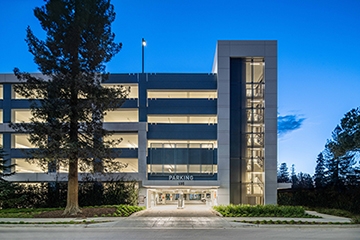Protecting Your Parking Investment
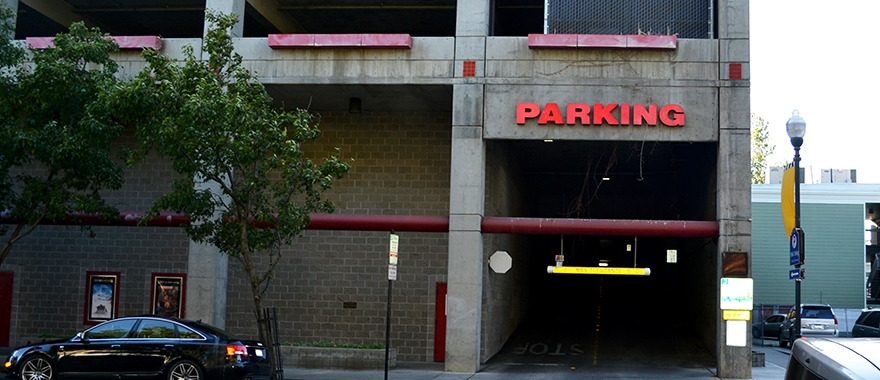
Structured parking represents a significant investment not just in cost, but also in the impression a facility makes. Since parking often provides the first impression a person has when they arrive at a destination, that impression should enhance their experience. Therefore, protecting a parking investment with proper care and maintenance not only extends a facility’s lifespan and reduces future retrofit and repair costs, but also ensures that the structure continues to provide that valuable positive first impression to its users.
Since parking structures are typically an open building type with natural ventilation, they are exposed to harsh elements from wind, rain, snow and freezing temperatures that accelerate deterioration and potential premature failure. If de-icing salts are used, chlorides in the salt will cause deterioration to happen even faster. Sealers and sealants are widely used to keep water out of joints and make vulnerable concrete surfaces more difficult to penetrate. The service life of these items is also greatly impacted by environmental and traffic conditions, and they need to be replaced regularly to retain their benefits.
While much can be done during initial design to enhance the durability of concrete structures and minimize maintenance, parking facilities still require regular upkeep to maximize their lifespan. A detailed cleaning and maintenance plan with daily, weekly, monthly, quarterly, semi-annual and annual tasks that include routine sweeping, pressure washing and visual inspections by a facility manager can pay long-term dividends by helping to identify potential issues before they require more extensive repairs, in addition to offering a positive first impression by keeping the structure pleasing to its users.
In addition to establishing a cleaning and maintenance plan, a Capital Improvement Plan can go a long way towards protecting a parking investment. An important part of this plan is regular condition assessments starting when the structure is 5-10 years old. In addition to identifying any structural issues that could affect a facility’s lifespan, condition assessments can also identify safety concerns that may impact users.
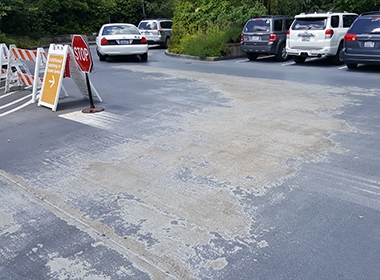 This elastomeric membrane, which protects the parking surface from the elements, has reached the end of its lifespan and requires replacement.
This elastomeric membrane, which protects the parking surface from the elements, has reached the end of its lifespan and requires replacement.
What to Expect from a Condition Assessment
Condition assessments are tailored according to the age of the facility and the client’s goals. For younger structures, a visual, non-destructive walk-through assessment may be all that is needed to identify any areas of concern. These inspections typically cover:
- Non-destructive sounding of concrete to determine areas of delamination
- Examining water stains, rusting and leaking
- Checking for scaling or concrete surface defects
- Checking for unusual cracking or spalling
- Examining deterioration or rust on connections
- Reviewing sealants and waterproofing
- Reviewing surface drainage and identifying areas of ponding water
Mechanical, electrical, plumbing, fire protection, waterproofing systems and other specialty systems may also be evaluated by engineers specializing in those particular areas.
The walk-through should also review life safety and ADA-related issues involving guardrails, lighting, and slip-resistant surfaces, which may not be meeting the standards imposed by the current code. While owners may not be required to update these items, ensuring a parking facility is safe and welcoming goes a long way towards improving the user experience.
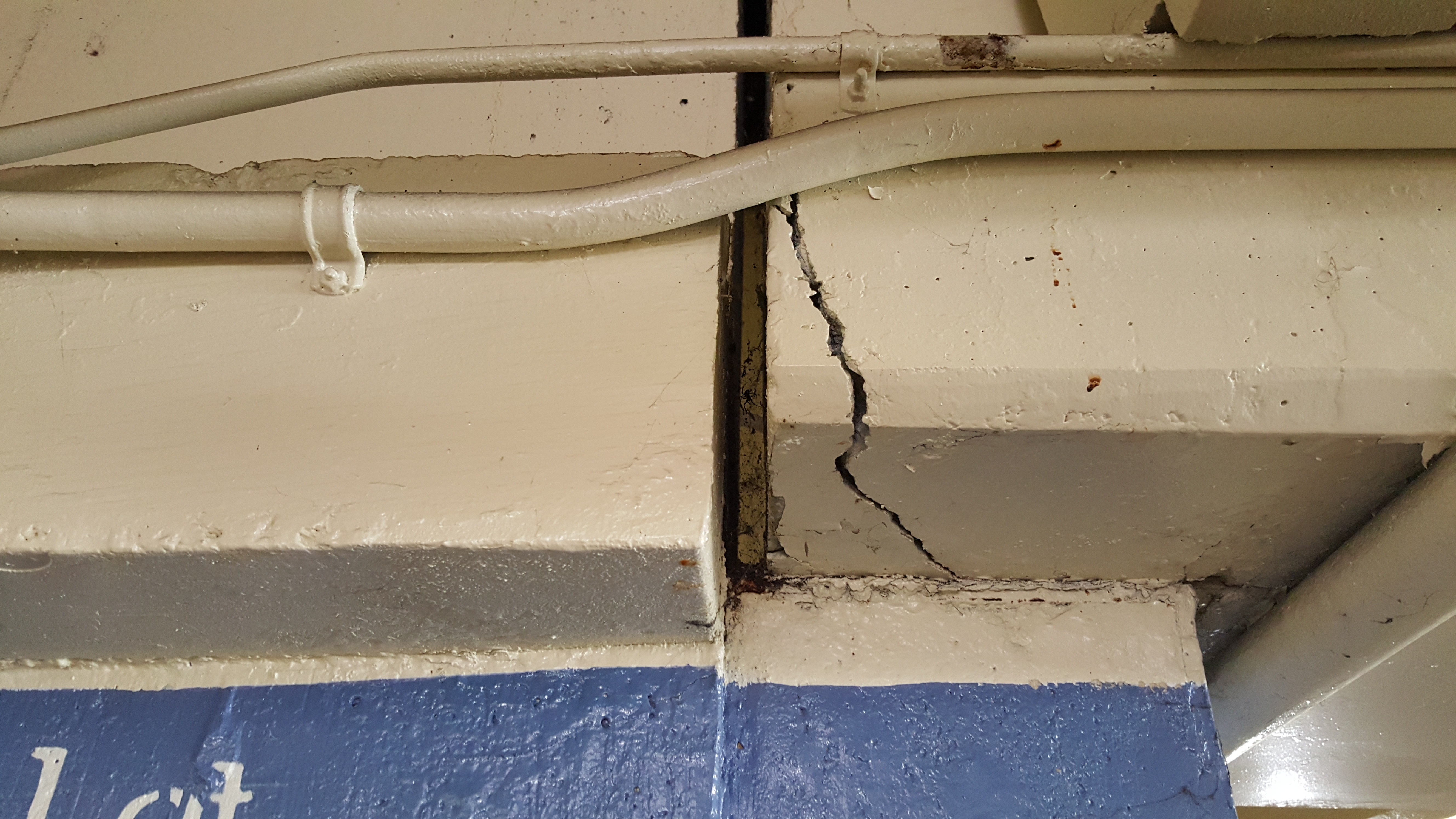 Destructive testing can provide a more comprehensive analysis than a visual inspection.
Destructive testing can provide a more comprehensive analysis than a visual inspection.
Older structures or those experiencing conditions such as leaks, spalling or excessive cracking can benefit from destructive testing to quantitatively measure levels of deterioration and craft a more tailored repair recommendation in response to the structure’s remaining lifespan. Destructive testing provides a more thorough and comprehensive evaluation of concrete than is possible with a visual inspection, and involves coring deck samples for laboratory analysis and testing including:
- Testing levels of chloride ion contamination in concrete, which is an indicator of the potential magnitude of rebar rusting and deterioration to be expected. This can also help estimate remaining useful life of a parking structure and inform corrective action such as installing elastomeric membrane on the top deck of an older parking structure to extend its useful life.
- Evaluating compressive strength of concrete
- Concrete petrography, which identifies the nature of defects, determines the degree of damage, and evaluates if it will continue in order to aid repair-versus-replace decision-making
While destructive testing is a more costly undertaking than a visual/non-destructive-only assessment, it can provide extremely valuable analysis for certain structures and does not damage the structure; cored areas of the deck are repaired with non-shrink grout. This can serve as the basis for determining repair options and helping owners plan for the future, whether it be budgeting for repair needs or planning for replacement of the structure.
Once the structure has been assessed, the team reviews the results and makes recommendations that can be categorized by level of importance and/or by a time-related budgeting program. For example, repairs can be categorized by level of importance as: (1) critical repairs and life safety, (2) preventive maintenance and (3) general maintenance and housekeeping. Time-budgeted repairs can be categorized as short-term, mid-term or long-term repairs. Estimates of probable costs for implementing the recommended repairs are also typically included.
The final report, with findings and recommendations arranged in conjunction with these categorizations and costs, helps owners take steps to begin repairs according to priorities and budget, and develop a long-term plan for making the most out of their parking investment.
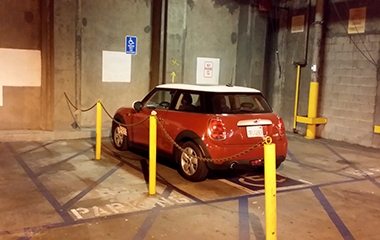 Condition Assessments can also identify ADA and safety issues.
Condition Assessments can also identify ADA and safety issues.
Battling the Enemy
It won’t come as a surprise to learn that water is the enemy. Some of the most common findings of condition assessments revolve around rusting steel. Galvanizing exposed metal, applying an elastomeric membrane to the top deck, and promptly routing and sealing any cracks that appear on the facility’s top deck can go a long way towards mitigating rebar rusting and water damage, and extending the service life of the facility. While some owners balk at the upfront costs associated with this type of prevention, it can prove more cost effective in the long term.
Parking facilities can have a long and productive lifespan if well-cared for. We invite you to explore some of our work with condition assessments to learn more about these services. If you have questions, our experts are here to help.



